We’ve finished reviewing and analyzing the 2023 data from our Santa Ana River Mouth Monitoring Project. Since the start of this project in 2021, community volunteers, motivated interns, and OC Coastkeeper staff members have been collecting and analyzing data on human, dog, and bird activity at the Santa Ana River Mouth. Continue reading to see what we found in 2023!
Santa Ana River Mouth Background
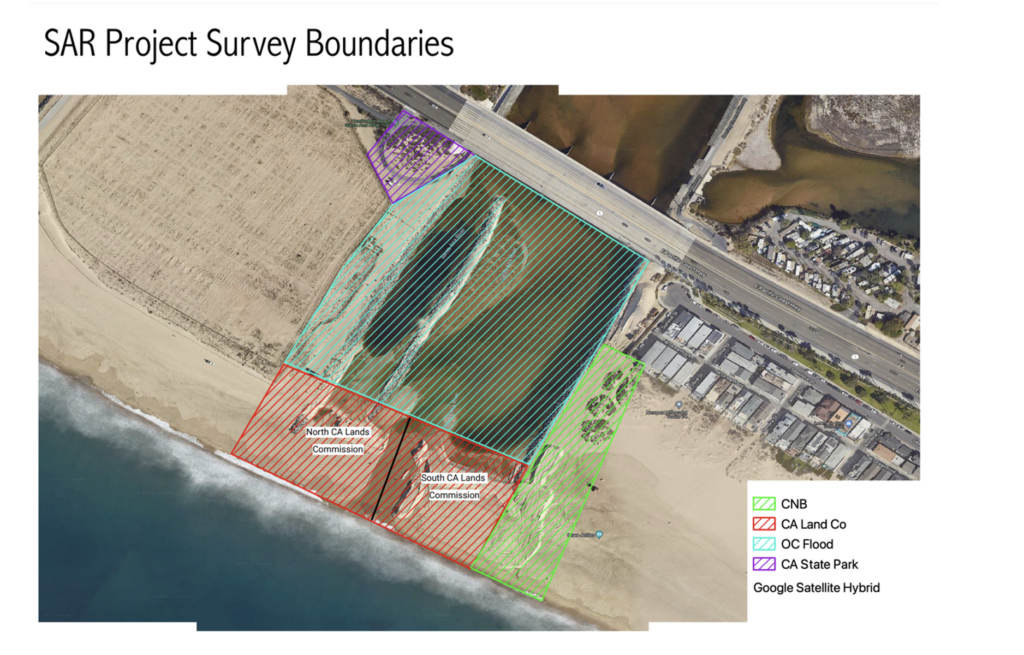
The Santa Ana River drains the largest watershed basin in Southern California, an area of over 2,650 square miles. Its 96-mile length ends in Orange County between Newport Beach and Huntington Beach at the Santa Ana River Mouth. The river mouth is home to sensitive wildlife, including two federally protected shorebirds – the endangered California Least Tern and the threatened Western Snowy Plover.
This area is governed by four distinct land agencies – the State Lands Commission, the County of Orange, the City of Newport Beach, and California State Parks. These convoluted land ownerships and the resulting confusion of enforcement are what inspired Coastkeeper to pursue research and advocacy in this area. This area is also a hotspot for human recreation, especially for dog owners looking to bring their pups to the ocean.
However, bringing dogs to the river mouth is a recipe for disaster. Despite the sandbars creating the illusion of safety by breaking up the surf, the river mouth has unpredictable currents and water quality. Dogs at the river mouth also pose a major threat to the area’s shorebirds and larger ecosystem.
Many of the river mouth’s shorebirds have evolved to respond to threats, whether it be rising seas or predators, by fleeing and abandoning their nests and chicks. Off-leash dogs in the area tend to chase down or “flush” birds away, resulting in chick abandonment and, eventually, population decline.
In order to educate the public about how to enjoy the river mouth and its wildlife respectfully, we conduct outreach next to the river mouth multiple times a week. Feel free to swing by to learn more about this project and habitat!
2023 Data
In 2023, we continued to conduct multiple weekly surveys of the Santa Ana River Mouth Area to analyze bird presence, dog behavior, and law enforcement officer interaction. In total, 5 Coastkeeper staff members and 12 trained volunteers collected 1,869 surveys between January and December. In the surveys collected, 21,452 people and 2,938 dogs were observed. Of the dogs, 1,878 were off-leash and 1,060 on-leash. Dogs off-leash accounted for 64% of the dogs observed.
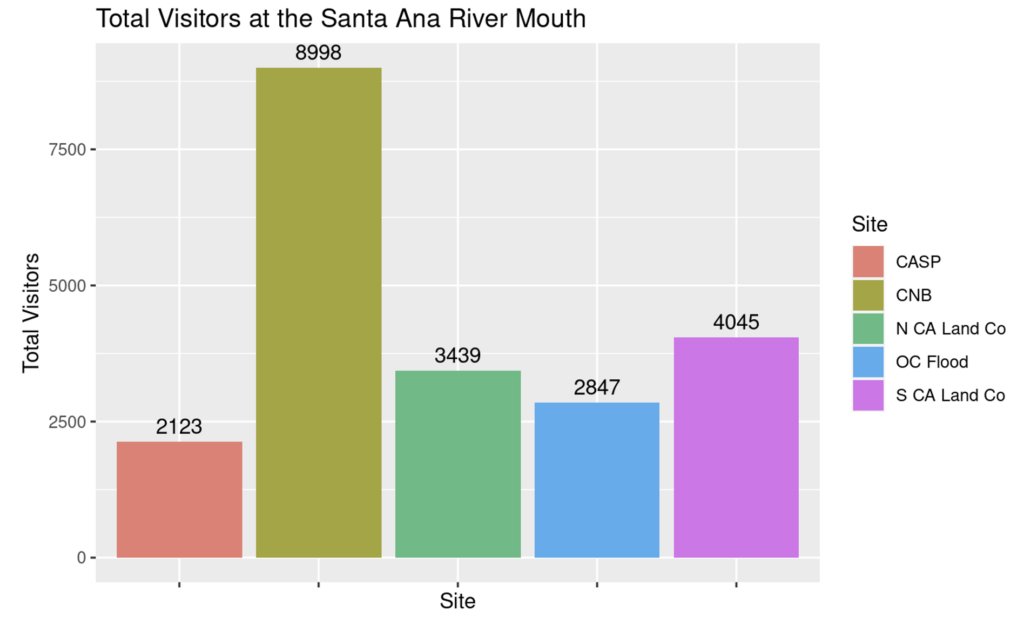

Law enforcement officers were present 392 times throughout all surveys completed in this time period, with the City of Newport Beach’s lifeguards observed most frequently, followed by the OC Sheriff’s Department. Surveyors witnessed no citations given to dog owners despite most off-leash dog observations occurring illegally outside of designated hours. However, 38 visitors were contacted by law enforcement officers, with few of those contacts addressing the Newport Beach dog rules.
We also observed “flushing events,” where a group of birds on the beach are approached by humans or dogs and subsequently fly away to escape. A total of 87 flushing events affecting 1681 individual birds occurred in OC Flood and South California Lands Commission jurisdiction.
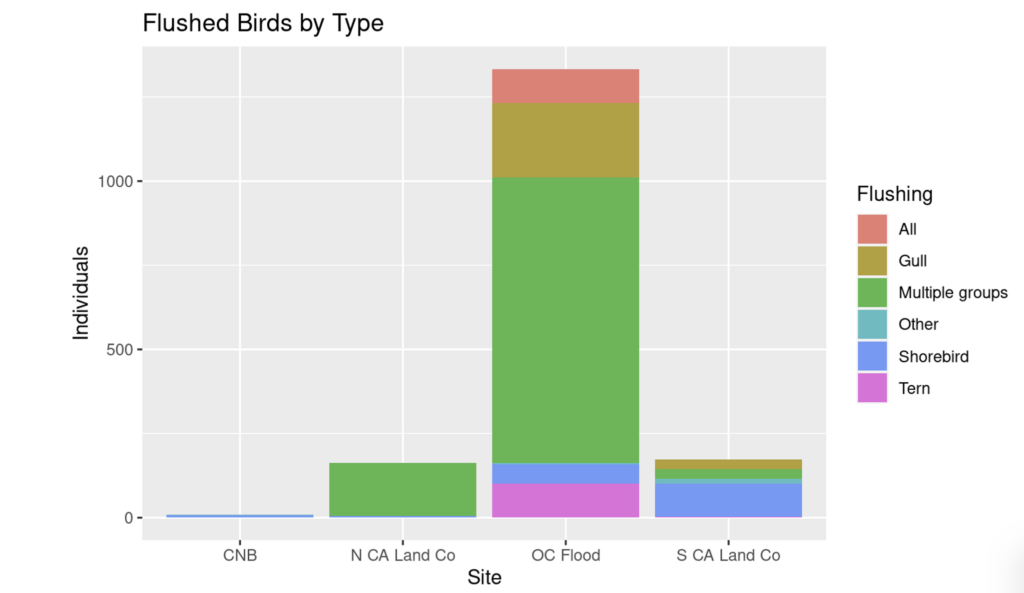
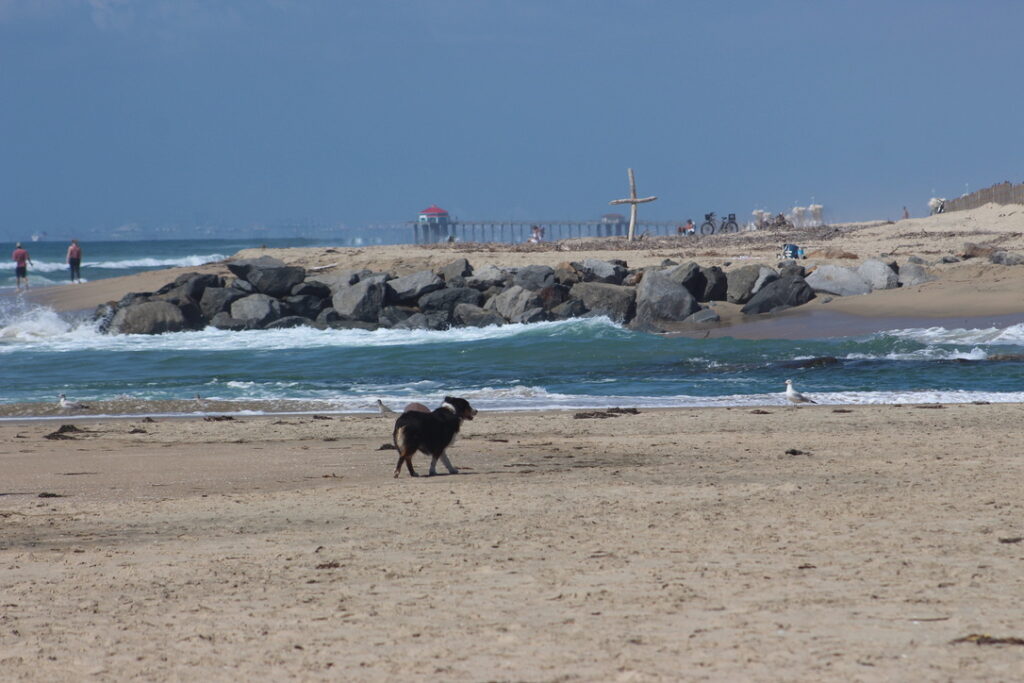
Analysis
We ran a correlation analysis to understand the association between off-leash dog presence and bird presence in 2023. We wanted to see if the presence of off-leash dogs would be associated with fewer birds present in the Santa Ana River Mouth. The data shows that there are more birds when fewer off-leash dogs are present and fewer birds when there are more off-leash dogs present. Thus, off-leash dog presence had a significant association with lower bird presence (p-value =2.541e-08).
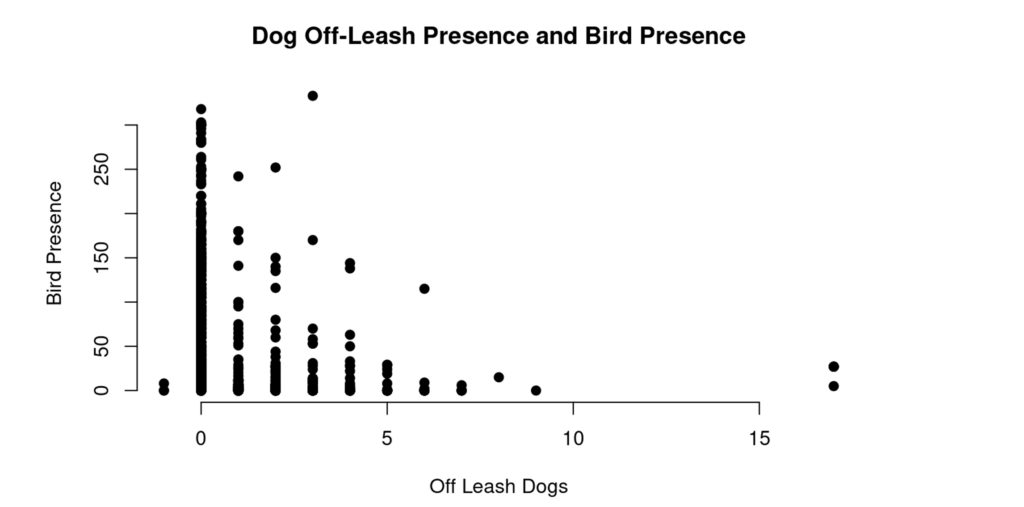
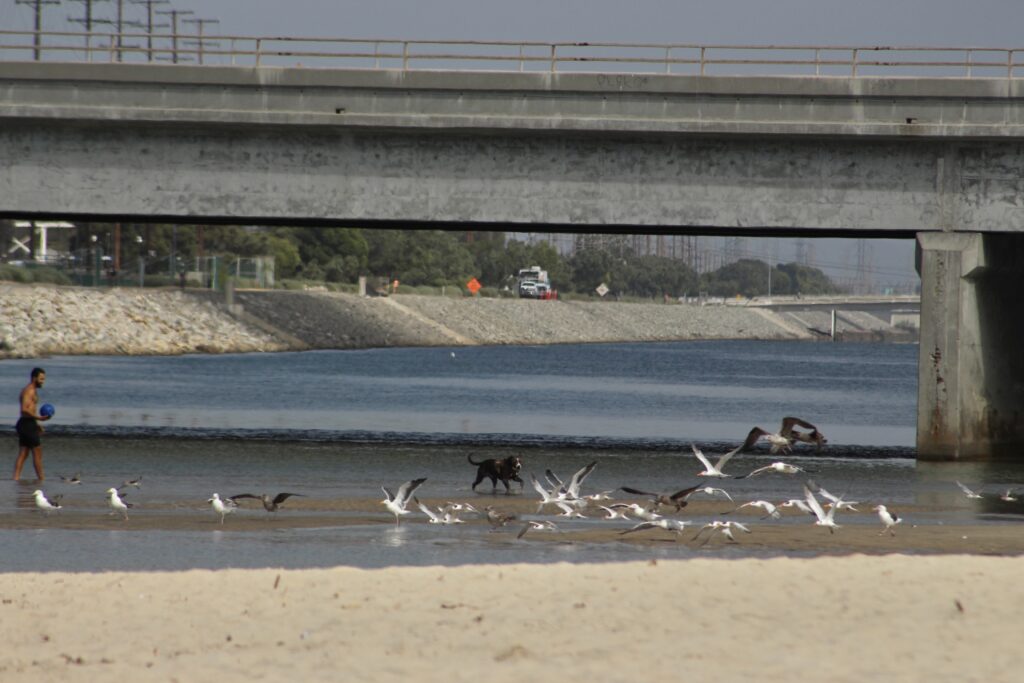
Conclusion
There were high numbers of both human and dog visitors in 2023. With the correlation data, we can conclude that higher amounts of off-leash dogs are correlated with lower bird presence in the area. This is why it is imperative that Newport Beach visitors only bring their dogs during the allotted times before 10 a.m. and after 4:30 p.m. and keep their dogs leashed at all times.
For the full 2023 project report, click here.






